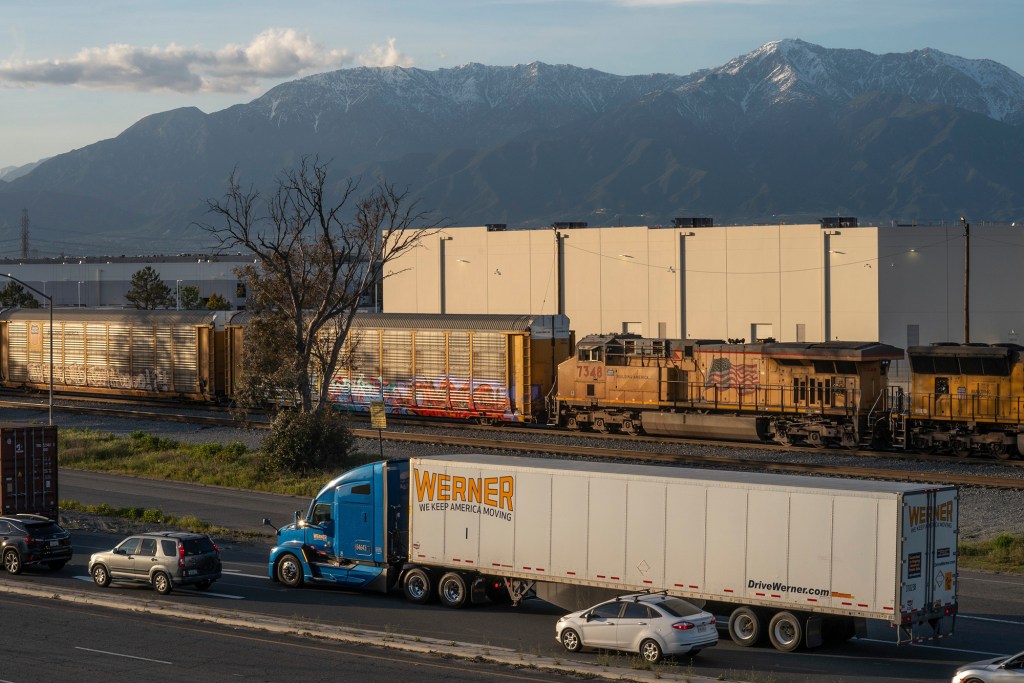Bills affecting specific economic sectors are, in some respects, the bread and butter of state legislative sessions, because they tend to have hefty financial consequences and when they pop up, the battle lines are generally quite predictable.
Sometimes they are efforts by one corporation or business group to cripple a rival. This year, for instance, saw successful legislation sponsored by casino-owning Indian tribes to sanction legal attacks on rival cardrooms.
More often, the bills pit business and employer interests against unions, personal injury attorneys, consumer activists and/or environmentalists. These bills are so common that the California Chamber of Commerce annually issues lists of “job killer” bills sponsored by one or more of those four interests.
The final hours of this year’s legislative session, however, produced a late-blooming bill setting new design and siting standards for warehouses and other “logistics use” facilities in San Bernardino and Riverside counties, the epicenter for handling goods flowing through the twin ports of Los Angeles and Long Beach.
Assembly Bill 98 culminates years of debate over the environmental and health impacts of the sprawling array of warehouses and other facilities that employ tens of thousands workers, are serviced by immense fleets of diesel-powered trucks and freight trains and, with the ports, are one of Southern California’s most important sectors.
“For more than a decade, the Legislature has heard outcries from communities where local governments have prioritized economic development over the quality of life and health of their communities,” the measure’s authors, Democratic Assemblymembers Eloise Gómez Reyes of San Bernardino and Juan Carrillo of Palmdale, declared in their presentation to legislative floors.
“AB 98 is the product of months of discussion and collaborations from environmental advocates, leaders in industry, labor, and dedicated public health advocates to raise the standards of warehouse development (and) a necessary compromise for communities and business entities alike.”
“We have tried to do as best we can, remembering that it’s the health of the residents of California that has to be the state’s top priority,” Reyes told CalMatters after the bill passed. “Everything else is secondary.”
One might expect that environmental and public health groups would strongly support the bill while the logistics industry and business groups would just as strongly oppose it. But that’s not the case. Instead there are strange bedfellows on both sides.
Building contractors and labor unions comprise the major supporters, and the California Chamber of Commerce has given its blessing, calling AB 98 “a valuable compromise” that’s preferable to more restrictive legislation and/or litigation to stop warehouse projects.
Two years ago Attorney General Rob Bonta sued the City of Fontana for locating a warehouse too close to a school.
And the opposition?
The California Center for Jobs & the Economy, an adjunct of the California Business Roundtable, issued a report on the immense size of the logistics industry and warned that limiting its growth could negatively impact the Southern California economy.
However, a coalition of 35 environmental groups sent a letter to Newsom, complaining about the bill’s eleventh-hour emergence with little opportunity to comment and declaring, “The bill sets dangerously low standards for warehouse siting and operations that would fail to protect the people who will be the unenviable neighbors of new and expanding facilities.”
Many other business groups, local governments and environmental and health groups also declared opposition when the final version of the bill became known.
The floor votes on Saturday, the last day of the session, reflected the mixed bag of supporters and opponents. It passed, but by fairly narrow margins in both houses.
Now Newsom must sort through the conflicting claims and decide whether AB 98 lives or dies.

